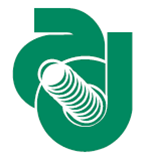Speaker
Dr
Katrin Straub
(University of Pisa / INFN)
Description
Positron emission tomography (PET) is a valuable technique to monitor in-situ and non-invasively the delivered dose in ion beam therapy exploiting the beta+ activity produced in nuclear interactions along the beam path within the target volume. Due to the high beam-induced radiation flux and, at the same time, low statistics of annihilation photons, as of to date data are usually acquired during beam pauses or after irradiation. The main challenge to be solved in in-beam PET applications is data acquisition also during therapeutic irradiation (full in-beam measurement). Any attempt to acquire coincidence data during the beam has been unsuccessful.
Our new PET prototype is based on two planar heads, each consisting of two independent detector modules with a joint active area of about 10x5 cm2. Each module is made of a position sensitive photomultiplier H8500 coupled directly to a scintillating LYSO crystal matrix of the same size. In recent improvements we have implemented a faster photon discrimination component that reduces the front-end dead time, and a modularized acquisition system that parallelizes the detector sensitive area.
For the first time, the PET system has been able to sustain the single photon count rates and acquire coincidences during the beam, in conditions of sub-clinical beam currents. A study on the paralyzation conditions and dead time losses under different beam currents is presented and the feasibility of a full in-beam PET scanner is discussed.
Author
Dr
Katrin Straub
(University of Pisa / INFN)
Co-authors
Dr
Abolfazl Arabpour
(Department of Physics, University of Pisa and INFN, Pisa, Italy)
Prof.
Alberto Del Guerra
(Department of Physics, University of Pisa and INFN, Pisa, Italy)
Dr
Francesca Attanasi
(Department of Physics, University of Pisa and INFN, Pisa, Italy)
Dr
Francesco Romano
(INFN-Laboratori Nazionali del Sud , Catania, Italy)
Dr
Giacomo Cuttone
(INFN-Laboratori Nazionali del Sud , Catania, Italy)
Dr
Giancarlo Sportelli
(Department of Physics, University of Pisa and INFN, Pisa, Italy)
Dr
Giuseppe Antonio Pablo Cirrone
(INFN-Laboratori Nazionali del Sud , Catania, Italy)
Dr
Marco Aiello
(Department of Physics, University of Pisa and INFN, Pisa, Italy)
Dr
Nahema Marino
(Department of Physics, University of Pisa and INFN, Pisa, Italy)
Dr
Niccolo' Camarlinghi
(Department of Physics, University of Pisa and INFN, Pisa, Italy)
Dr
Nicola Belcari
(Department of Physics, University of Pisa and INFN, Pisa, Italy)
Dr
Stefano Ferretti
(Department of Physics, University of Pisa and INFN, Pisa, Italy)
Prof.
Valeria Rosso
(Department of Physics, University of Pisa and INFN, Pisa, Italy)

